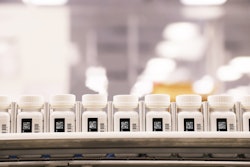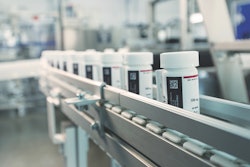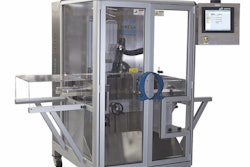Like any pharmaceutical manufacturer, Merck & Co., Inc.’s serialization approach is driven by the Drug Supply Chain Security Act (DSCSA) in the US, Falsified Medicines Directive (FMD) in the European Union, and similar country-specific regulations around the globe. But the company is also deriving value from serialization data, and sees potential uses for the data further in the future.
“We serialize our product in accordance with all of the DSCSA, FMD and other similar regulations, so obviously there's a compulsory aspect of the work that we do,” says Michele D'Alessandro, Vice President and CIO for the Manufacturing Division at Merck. But she explains that there’s more to be gained. “We believe that through the collection of all of this serialized product data, there's a wealth of information in the context of big data, insights and descriptive/predictive analytics. I think it's actually untapped potential, meaning I don't think we do enough with the power behind that data today.”
Beyond regulations
D'Alessandro notes that knowing the product genealogy, or history of the product, as it flows through the supply chain is very valuable in answering questions, like:
-
What is the path the product follows? Is it as expected?
-
Does product get stalled in any part of the supply chain and what are the patterns to the latency?
-
How can we use these insights to proactively shorten the lead time of our supply chain the next time?
Merck can also compare what might be happening with distribution in one country versus another, because, while the requirements are all called “serialization,” countries have implemented their rules differently. “We actually get to compare the differences that exist, and that gives us the ability to either standardize or point out the variations that might be adding to complexity, to cost, to efficiency, etc.,” she says.
The (human) resource challenge
While some companies struggle with pushing data where it needs to go, D'Alessandro says that Merck’s technology approach of an integrated global system allows the data to be easily accessed, understood, viewed and aggregated. “A different challenge is not so much moving the data but in actually taking the time to go back and analyze it, because of people's bandwidth or their capability. You need some folks who are data-oriented, inquisitive in nature, and predisposed to searching for the unexpected."
Visualization
The human component is extremely important, but what about the tools to analyze that data to look for patterns in how product is moving?
Merck pulls many types of transactional data into what is referred to as its “big data platform.” D'Alessandro explains.“Serialization data is one of the types of data we pull in. Once it's in the big data platform, we have a variety of different mechanisms for using the data. Some of them are very structured, and very traditional, like dashboards or pre-defined queries and reports. Then we have other more advanced tools that allow folks to do data modeling, or apply more advanced statistical or mathematical models. That becomes more challenging, not only the human component, but also the types of tools that we use there are still evolving and, I'd say, being matured for use in an enterprise setting.”
Advanced tools aren’t always needed. “Some of the tools we use to ‘coax insight’ out of the data look at the data in its raw format. They don't necessarily need the data to be highly structured or harmonized first,” she says. “There's still room left for experimentation, and not being afraid to try different things to see what fits your business, your culture, and your employee population.”
Some lament that data is still exported to programs like Excel because advanced tools aren’t available yet. But D'Alessandro points out that this is a human factor as well: “If our colleagues are not really comfortable, or they're not willing to try, they go to what they know, which is Excel. That's not a bad thing, but it's not necessarily going to get you more advanced insight.”
The industry and tools are still evolving and can benefit from employees with a unique understanding of manufacturing as well as user experience and software.
Check out Part 2, Analytics, Scanning and Advice.






















